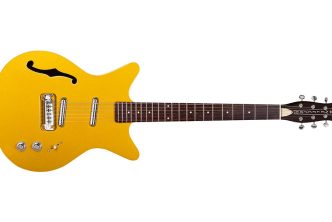New Profiler OS Version 5 in public beta
Kemper GmbH/ Ruhr Area/ Germany – Nov. 16th, 2016 (ictw) – Kemper today unveiled a range of breathtaking new delay effects for the Kemper Profiler. In Profiler OS Version 5.0 guitar players will find a giant leap forward in delay FX technology. Scheduled for release later this year Profiler owners now have the chance to preview the new delays immediately with the public beta version of OS 5.0. Though it is not recommended to use this version for touring and other critical applications yet, it is great fun to be able to check out the astonishing new delay concepts prior to the final release already.
The Kemper Profiler Delays: All-in!
Without a doubt, the new Profiler Delay effect types are some of the most advanced and comprehensive effects collections in the Profiler and also compared to other solutions. The Kemper approach to delay effects is quite different from what musicians are accustomed with: There is no dedicated Reverse Delay, Tape Delay or Ducking Delay. Kemper decided that it simply makes no sense splitting crucial tone design features into separate delay types. Instead, Kemper have equipped every single delay type with a range of tone shaping parameters – and routing of course: Why not have a Dual Reverse Delay? Or a Serial Delay with analog tape character? Or a Melody Delay with ducking? All of these are possible with the new delays in the Profiler, from OS 5.0 and up.
They new Delay categories are:
- Single Delay
- Dual Delay
- Two Tap Delay
- Serial Two Tap Delay
- Rhythm Delay
- Quad Delay
- Dual Crystal Delay
Video: Kemper Profiler – That Rig Show #9
Video by Skating Dog Production
These features are available in most of the new Profiler delays:
Most of the delays can be designed towards a tape delay tonality with parameters like Hi Cut/ Lo Cut, Cut More, Flutter Intensity and Flutter Shape, Grit (Tape Sat & Distortion). Many of the delay types feature a Grit control to add typical tape saturation and distortion to the delay signal. With less intensity of these controls, the delays will have both the sonic flavor of an analog bucket-brigade delay or a modern digital delay.
A number of delay types feature the parameters “Swell”, “Smear” and “Cross Feedback”. Each of these parameters will make the delay sound smoother and can turn a rhythmical delay into a more ambient, or reverb-like, effect. And together, they work even better!
All the Parameters at a glance
- Cut More – If the sound degradation of Low Cut and High Cut is not drastic enough or the build-up of the degradation is slow at long delay times the “Cut More” soft button doubles the impact of Low Cut and High Cut.
- Hold – “Hold” is an Action & Hold function, which turns the delay into an endless loop. The delay track will be repeated without losing or gaining level, and without sound degradation.
- Infinity – Infinity is another Action & Hold function to switch Feedback from the regular value (between 0 and 100%) to the Infinity feedback value that spans from 100% to 200% which is separately controllable. This feedback lets the delay repeats build up instead of decay, pushing them deeper into tape saturation, where they will repeat indefinitely, as the sound degrades over time.
- Cross Feedback – A small number of delay types – namely the Dual Delay and the Quad Delays – feature a “Cross Feedback” control. Increasing the value beyond zero causes each delay to not only feed its output signal back to its own input, but also to the other participating delay lines. This creates a more diffuse delay rhythm pattern, adding a reverb-like character to the delay.
- Reverse Mix – When set fully to the right, the delay is turned into a reverse delay. With intermediate values, you will get a mixture of the forward and reverse delay, which is quite unique.
- Swell – The Swell parameter engages an auto-swell effect at the input of the delay that lets the volume rise slowly with every new strike of the strings. At low values, only the pick attack is dampened, creating a smoother delay signal. With larger values, the onset of the notes is blurred, creating a pad-like delay.
- Smear – The Smear parameter adds a small reverberation unit to the delay, the intensity of which strengthens with every feedback repetition. Pick attacks become increasingly diffused, or smeared, giving the delay a reverb-like quality. In combination, Swell and Smear are a perfect recipe for ambient and ethereal delays.
- Super Stereo – When the Stereo parameter is moved above 100% a novel “super-stereo” effect takes over that lets the delay reflections appear well outside of the regular stereo image.
Video: Kemper Delay Demo
Video by Wille C
Pricing and availability
Version 5.0 of the Kemper Profiler OS is available as a public beta versionimmediately and for free from the Kemper Website: www.kemper-amps.com/downloads
It is not recommended to use this version for critical applications like ongoing touring or any other ongoing production environments.
About The Kemper Profiler
The Kemper Profiling Amplifier represents a radical new approach to guitar sound. For decades, the electric guitarist has effectively been shackled to the tube amplifier as the only solution for getting “that sound”. This combination may indeed be glorious, but it is far from ideal; achieving consistent results between practice, studio, and touring situations continues to challenge the guitarist, just as it has since the early 1930’s. With the advent of the Kemper Profiling Amplifier, everything has changed. For the first time in history, guitar players are free to create the most unique and individual tones that reflect the very essence of the individual player, and then capture these exact sounds into the digital domain with Kemper’s unique technology. www.kemper-amps.com
PLEASE DONATE
If you find this content helpful, please consider a donation. Thank you!








